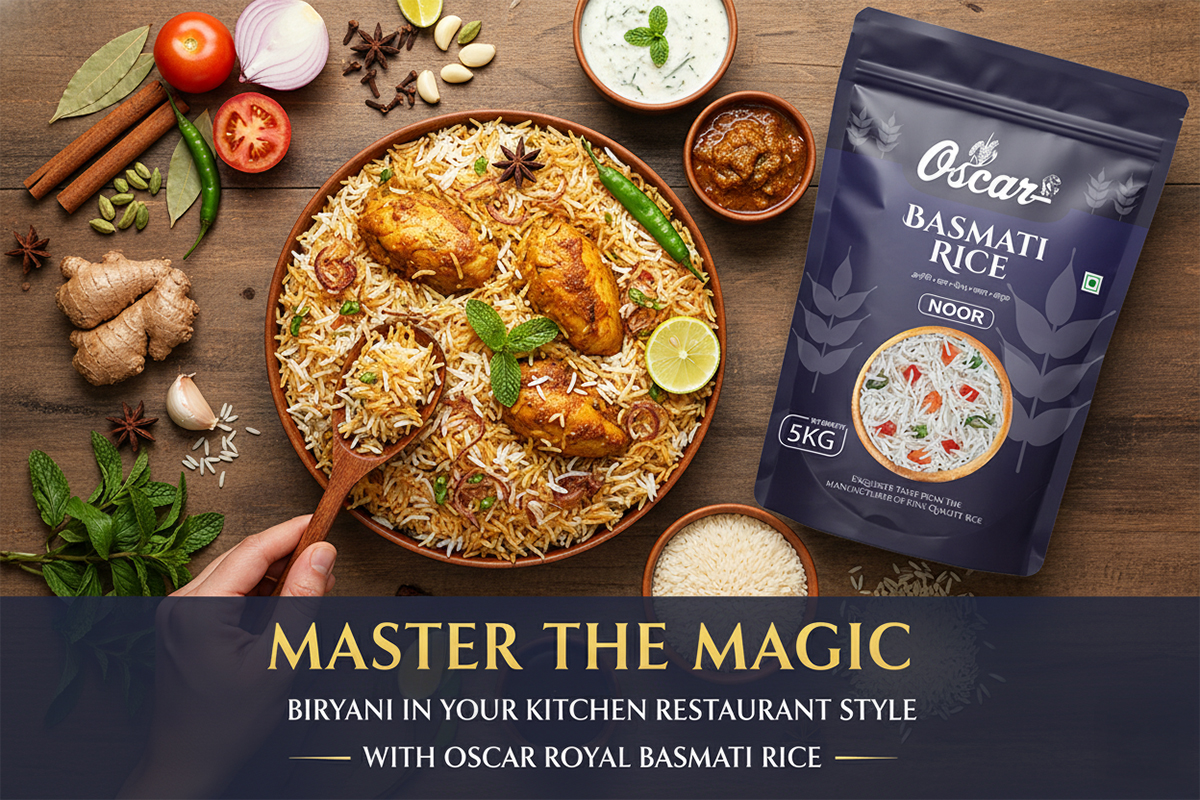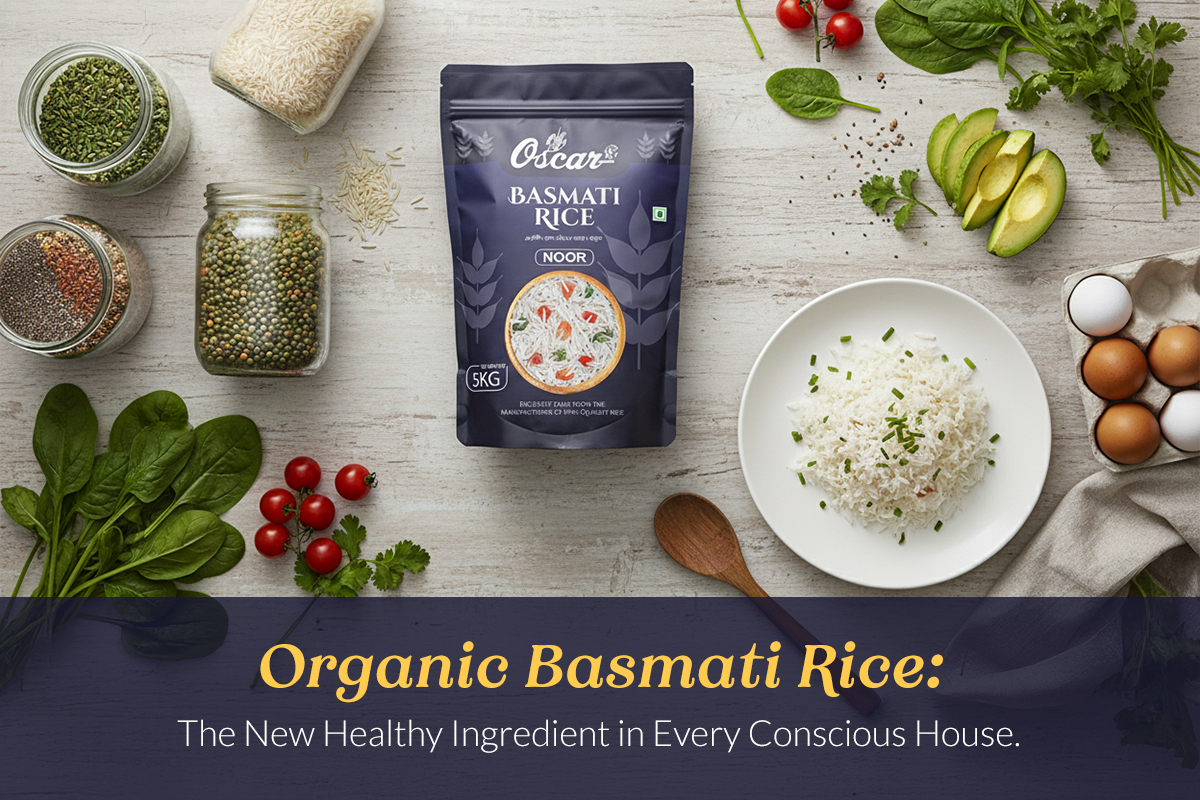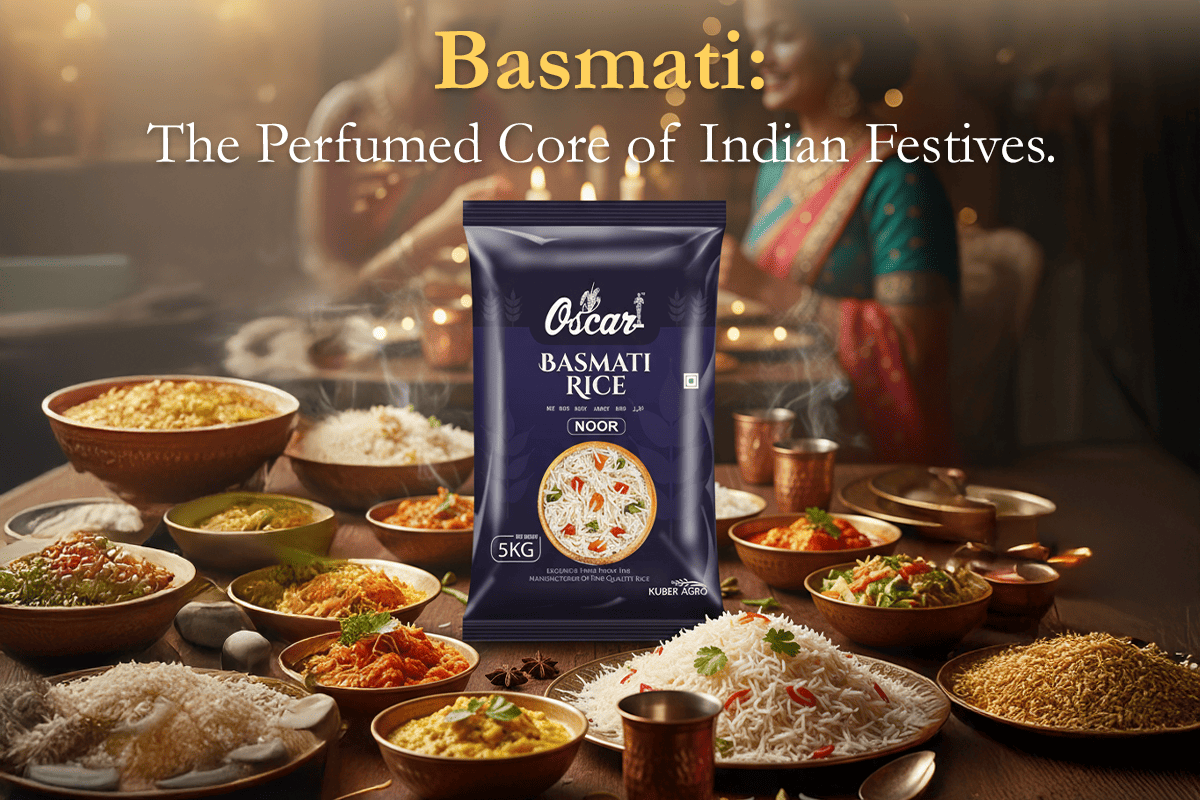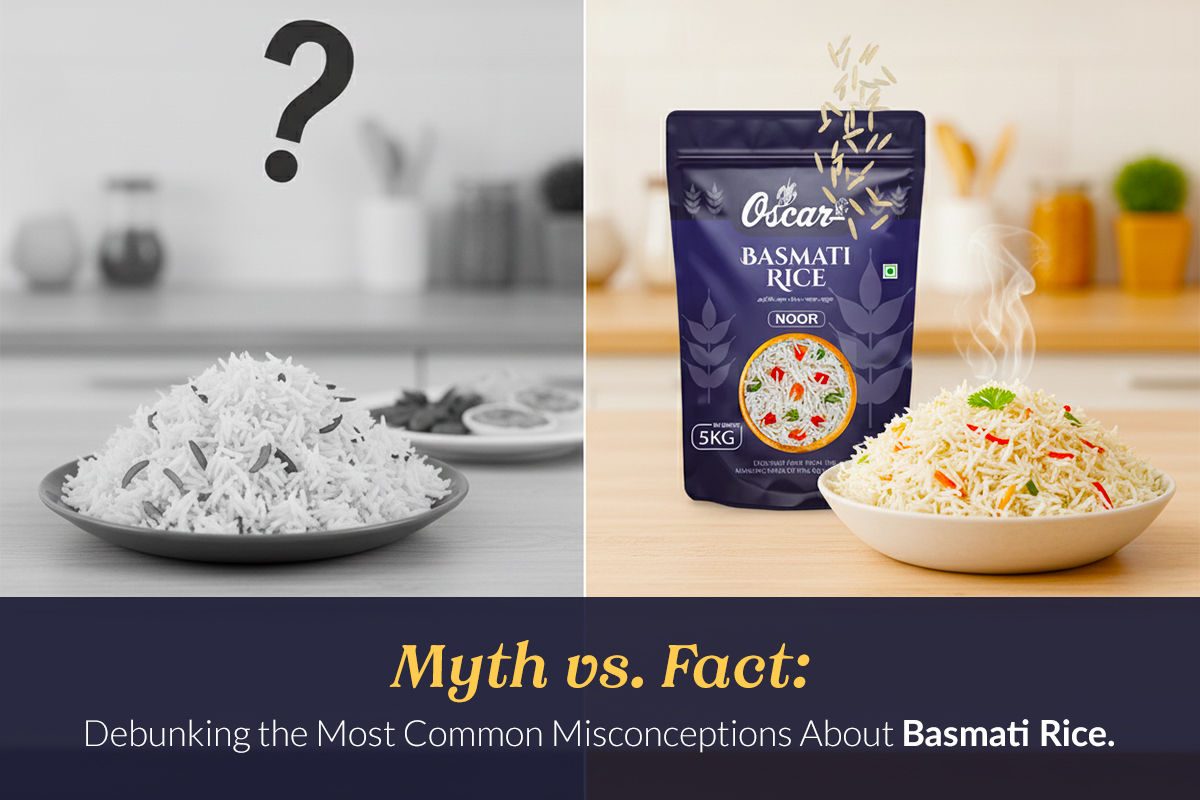Have you ever used your spoon in an ideal, spicy plate of biryani in your favorite restaurant and felt like doing that wonder at home? We know we have! The magic of that fantastic taste, and more so those elongated, distinct, and lofty grains, is usually in the rice you select and the manner in which you handle it.
Today, we are so excited to share our secrets to making such a real, show-stopping restaurant-style biryani at home, and it will all begin with the basis: Oscar Jannat Basmati Rice. We also serve as Kuber Agro Industries; we are so super proud of our grains and heritage—it is what makes a good biryani great.
The Biryani Blueprint: Rice: Why the Choice You Make Matters.
Biryani is not a mere rice meal; it is an experience. The strata of spiced meat (or vegetables) must have a durable, flavor-absorbent grain that will not be destroyed or become mushy under the lengthy, slow Dum method of cooking. This is exactly what you require: a quality and aged grain that comes with such types of rice as Oscar Platinum Basmati Rice or Oscar Noor Basmati Rice.
Their grains are broad in length and thin as well as extra-long, and these become, when cooked, very long and nice. More importantly, they are less starchy and have a strong texture that enables them to stand out and stay fluffy, which is the ultimate requirement of a biryani that is of restaurant quality. Believe us, the masala in the world is no good, but when rice is sticky, it will be a different thing!
Biryani Perfection: The Three Golden Rules.
To get that unbelievable dana-dana (grain-by-grain separation) texture, it is not difficult, yet it demands that at least several important points be paid attention to.
1. The Essential Soak and Rinse
This is non-negotiable! The fluffy rice is the adversary of the starchy powder on the surface of the rice.
Rinse: Add the necessary quantity of your Oscar gluten free Basmati Rice and run under running cold water. The grains should then be stirred about with your hand and rinsed until the water becomes nearly clear. This is important to eliminate surplus starch.
Soak: Rinse the rice that is rinsed and rinse it in fresh and room-temperature water for 30 minutes. Do not over-soak because this will leave the rice weak in that it may break during the process of parboiling and dumming. The soaking process makes the grains begin absorbing water so that they are evenly cooked and will extend to their fullest.
2. The Perfectly Parboiled Rice (The 70 Percent Cook).
During the last slow cooking process, the rice and the gravy (masala) are wedded in biryani. To make this happen, the rice cannot be cooked fully prior to this.
The Flavor Bath: Bring a large pot of boiling water to a boil. Do not hold back on the water; you want to cook the rice like pasta. They should have plenty of salt (the water must be salty as the sea!) and some whole spices, bay leaf, cinnamon stick, green cardamom, cloves, or any that bring flavor to the water, so that the grain is spiced with them.
The Right Time: Drain the soaked Oscar long grain Basmati Rice and put it into the boiling water. Let it cook on high heat. You should visit it regularly. In the case of restaurant-style biryani, we want the rice to be approximately 60-70 percent cooked. The grains are still to have a bite-sized firm bite in the middle, which is called al dente. This typically requires 4 to 6 minutes, although you have to sample it to be certain!
Stop the Cook: Drain the rice at once in a colander. Rinse a bit of cool water on it to prevent the remaining cooking process. This helps to avoid the grains becoming mushy in the future.
3. The Grand Finale: Dum Pukht (Slow Steaming).
This is the magic part, and this is where your Oscar aromatic Basmati Rice really has its way, taking up the soft, fragrant flavors of your masala.
Layering with Love: In a heavy-bottomed pot or Dutch oven, begin with a layer of your chicken or vegetable masala. Then half your parboiled rice lightly. Add a few drops of saffron milk (saffron strands moistened in warm milk), a pinch of melted ghee, fresh mint and coriander, and a handful of fried onions (another absolute necessity of restaurant quality!). The rest of the rice is added, and again the layering of ghee, saffron milk, herbs, and fried onions is repeated.
The Seal: Stuff the pot. One of the conventional ways of making biryani is that the lid is covered with dough (atta), but a tight-fitting lid coated with foil will also work wonders to keep the steam inside. This is the trapped steam that boils the rice between 70 and 100 percent and evaporates the flavors to create a beautiful symphony.
The Dum: the biryani is cooked on the least amount of heat possible in an estimated duration of 20 to 25 minutes. Do not open the lid at this moment! The gradually creeping heat and vapor are at work.
The Oscar Promise: A Tradition of the Best.
When picking Oscar aged Basmati Rice, you are picking a brand; however, you are also picking a history of quality assurance at Kuber Agro Industries. We also make sure that each grain is fully matured, processed, and packed so that it maintains the long grain, aromatic flavor, and amazing texture that you can only get in the best biryanis.
And even in case you have not been able to prepare restaurant-style biryani at home, we can assure you, when you upgrade the rice to the Oscar type and apply these three easy rules, you will have completely changed the game. The resultant biryani will smell good, the grains will be individual, and the taste will be out of this world.
Then take your Oscar premium quality Basmati Rice, throw on your apron, and prepare to serve your family and friends a biryani that will pass as one that was made by a five-star kitchen. Happy cooking!





